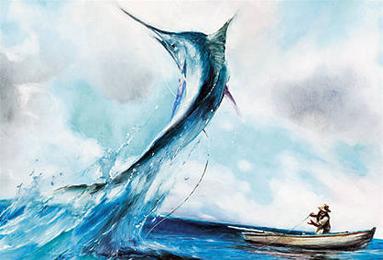
• Drawn on film animation: a technique where footage is produced by creating the images directly on film stock, for example by Norman McLaren, Len Lye and Stan Brakhage.
Caroline Leaf's Two Sisters (1991), an award-winning short which uses drawn-on-film animation --- http://www.youtube.com/watch?v=ITlfQ03hXbM

• Paint-on-glass animation: a technique for making animated films by manipulating slow drying oil paints on sheets of glass.
Aleksandr Petrov's 1999 The Old Man and the Sea (Academy Award for Animated Short Film) --- http://www.youtube.com/watch?v=v1EbNvHDxbA
• Erasure animation: a technique using tradition 2D medium, photographed over time as the artist manipulates the image. For example, William Kentridge is famous for his charcoal erasure films.
• Sand animation: sand is moved around on a backlighted or frontlighted piece of glass to create each frame for an animated film. This creates an interesting effect when animated because of the light contrast.
• Flip book: A flip book (sometimes, especially in British English, called a flick book) is a book with a series of pictures that vary gradually from one page to the next, so that when the pages are turned rapidly, the pictures appear to animate by simulating motion or some other change. Flip books are often illustrated books for children, but may also be geared towards adults and employ a series of photographs rather than drawings. Flip books are not always separate books, but may appear as an added feature in ordinary books or magazines, often in the page corners. Software packages and websites are also available that convert digital video files into custom-made flip books.
Very interesting and informative artistic information. I especially like the video on the sand drawing with the lighting effects.
ReplyDeleteNice blog & nice article!